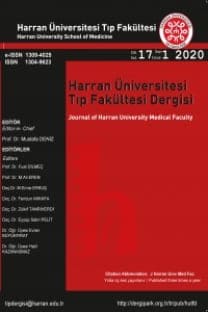Klima Temizleme Solüsyonu İçimi Sonrası Oluşan Oral Kavite ve Özafagusdaki Kimyasal Yanık
More than 25,000 chemicals are commonly used in the industry, agriculture, house cleaners and others, and
many of them have been identified as having the potential to cause burns. This makes chemical burns an
important potential risk in the household (1). The severity of tissue damage depends on the destructive
properties of the ingested substance, duration and the extent of its contact with the tissue. Tissue damage can
include the oral mucosa, nasal orifice, gastrointestinal tract and respiratory tract. We present a case of
chemical injury in the oral cavity and oesophageal tract resulting from the drinking serpantin cleaner for air
conditioning. A24-year-old man who has mental retardation, had presented to the emergency department via
ambulance approximately 30 minutes after drinking serpantin cleaner for air conditioning at his home.
Ulcerations all throughout the mouth were noted at the time of the first examination (Figure 1). The patient
was lethargic and was not able to respond to sound. The physical examination findings were hypersalivation
and dyspnea. Patient was intubated. He admitted to intensive care unit for monitoring and treatment.
Endoscopy was planned on 24. hours the hospital day. Endoscopic evaluation in the ICU revealed edema and
erythema of the superficial mucosa on superior oesophageal area and in the gastric fundus (Figure 2).
General supportive treatment was given. The patient was extubated on the fifth hospital day. Peripheral
parenteral nutrition was supplied for seven days. Serpantin cleaner for air conditioning include bases
material. Alkalis are particularly destructive on tissues because of their lytic action. Liquefaction loosens
tissue planes and allows deeper penetration of the agent so that alkali burns tend to be more severe than acid
burns (2). In conclusion, a chemical burn should be carefully managed and may require a team of experts.
Chemical Injury In The Oral Cavity And Oesophageal Tract Caused By Air Conditioner Cleaning Solution
More than 25,000 chemicals are commonly used in the industry, agriculture, house cleaners and others, and
many of them have been identified as having the potential to cause burns. This makes chemical burns an
important potential risk in the household (1). The severity of tissue damage depends on the destructive
properties of the ingested substance, duration and the extent of its contact with the tissue. Tissue damage can
include the oral mucosa, nasal orifice, gastrointestinal tract and respiratory tract. We present a case of
chemical injury in the oral cavity and oesophageal tract resulting from the drinking serpantin cleaner for air
conditioning. A24-year-old man who has mental retardation, had presented to the emergency department via
ambulance approximately 30 minutes after drinking serpantin cleaner for air conditioning at his home.
Ulcerations all throughout the mouth were noted at the time of the first examination (Figure 1). The patient
was lethargic and was not able to respond to sound. The physical examination findings were hypersalivation
and dyspnea. Patient was intubated. He admitted to intensive care unit for monitoring and treatment.
Endoscopy was planned on 24. hours the hospital day. Endoscopic evaluation in the ICU revealed edema and
erythema of the superficial mucosa on superior oesophageal area and in the gastric fundus (Figure 2).
General supportive treatment was given. The patient was extubated on the fifth hospital day. Peripheral
parenteral nutrition was supplied for seven days. Serpantin cleaner for air conditioning include bases
material. Alkalis are particularly destructive on tissues because of their lytic action. Liquefaction loosens
tissue planes and allows deeper penetration of the agent so that alkali burns tend to be more severe than acid
burns (2). In conclusion, a chemical burn should be carefully managed and may require a team of experts.
___
- 1. Palao R, Monge I, Ruiz M, Barret JP. Chemical burns:
pathophysiology and treatment. Burns. 2010 ;36(3):295-
304.
- 2. Rallan M, Malhotra G, Rallan NS, Mayall S.
Management of chemical burn in oral cavity. BMJ Case
Rep. 2013 :22;2013.
